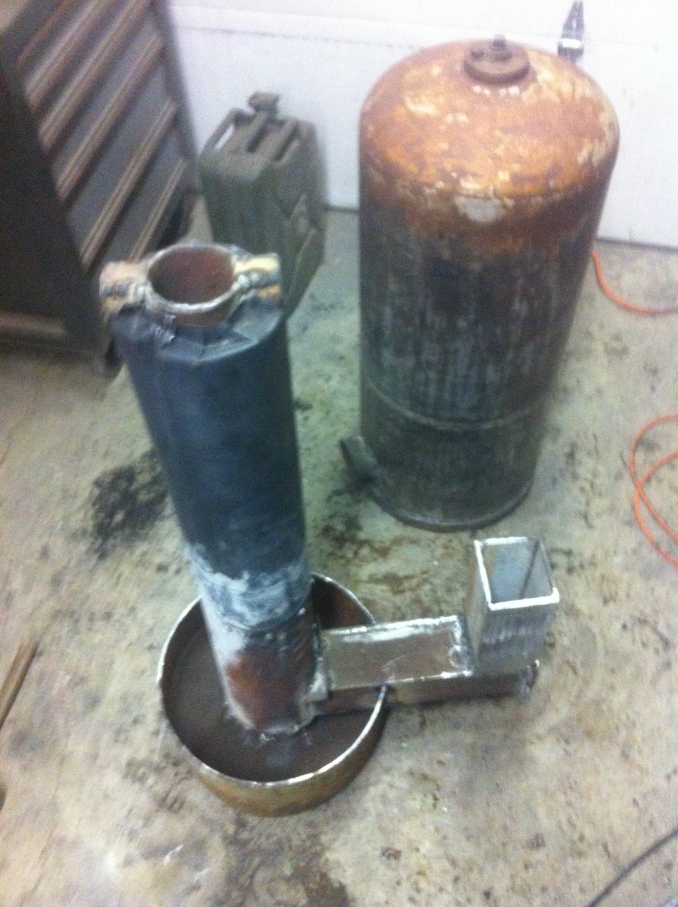posted 10 years ago
There is not a "calculation" of J-tube dimensions for a given tank/barrel size; rather, you can figure how large a system (internal diameter) will fit inside a given barrel, or what minimum barrel dimensions you need for a given J-tube system.
If you are starting from the barrel, find the inside dimensions and subtract the air gap needed for downward flow, generally a minimum of 1 1/2 to 2 inches times 2, which gives the maximum outer diameter of your insulated heat riser. Compare that with the diameter of system you are considering and see how much is left for insulation around the riser (divide by 2 to get actual thickness).
20" ID - (2" x 2) = 16" max OD riser. A 6" system built with a cast cylindrical riser would leave 10" divided by 2 or up to 5" for riser structure plus insulation, which is plenty. If you are using firebrick for the riser, you need a 6" square inside, which will leave less thickness for external insulation. Firebrick splits (4 1/2" x 9" x 1 1/4" thick) are best for a riser, which would give an approximately 9" outside square or 8 1/2" if you can cut all the bricks to exact dimension of 7 1/4" long. A 9" square is about 13 1/2" across the corners, so you could only have 1 1/2" of insulation at the corners. It could be much thicker, up to 3", along the flats, though, compensating for the thinner corner insulation.
The actual J-tube interior dimensions and proportions can be made to fit your tank/barrel height, as long as you keep the general ratio of 1:2:4 for feed tube, burn tunnel and riser. More detailed advice would depend on your plans for the overall system, and how you want to heat. The ZeroFossilFuel plans on that site are for a stove, not a mass heater. A stove heats only when burning, while a mass heater stores heat for long slow delivery lasting for hours after the fire is out. Do you want to heat the fish tank directly through your coil, or a reservoir tank that will be pumped through the fish tank as needed to keep its temperature appropriate?
Someone recently (last year) built a 6" RMH which had circulating flue channels under the fish tank, and reported that it worked well. He did use a fan to draw combustion air at a constant rate, which makes a system dependent on constant electricity supply











































